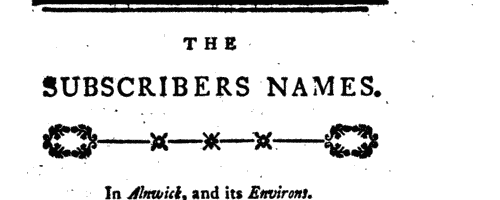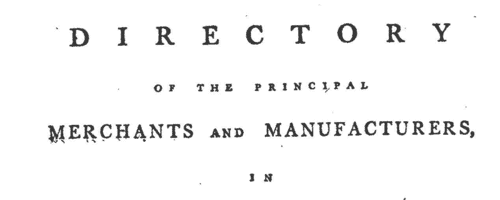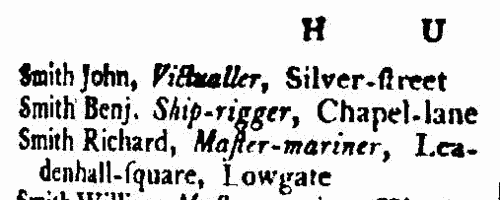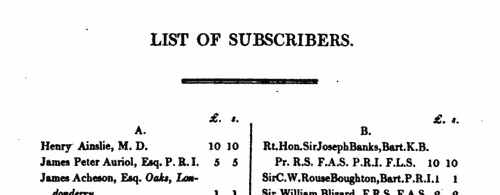Lightbody Surname Ancestry ResultsOur indexes 1000-1999 include entries for the spelling 'lightbody'. In the period you have requested, we have the following 75 records (displaying 1 to 10): Single Surname Subscription | | | Buying all 75 results of this search individually would cost £378.00. But you can have free access to all 75 records for a year, to view, to save and print, for £100. Save £278.00. More... |
These sample scans are from the original record. You will get scans of the full pages or articles where the surname you searched for has been found. Your web browser may prevent the sample windows from opening; in this case please change your browser settings to allow pop-up windows from this site. Scottish litigants, rebels and cautioners
(1585-1592)
The Privy Council of Scotland exercised a superior judicial authority in the kingdom, and consequently received and dealt with a constant stream of petitions, as well as dealing with the internal security of the state. This register of the council from 1 August 1585 to 31 July 1592, in the reign of king James VI, was edited by David Masson, and published under the direction of the Lord Clerk Register of Scotland in 1881. Some of the individuals mentioned are the complainants, those of whom they complained, and the sureties on both sides: at this period, some of the complainants are alleging serious attacks, often of a feuding nature. Many of the bonds entered into by the cautioners are promises to keep the peace towards such enemies. Failure to answer to the council when summoned was a serious contempt, leading to being denounced a rebel, with serious consequences. But 'horning' was also used in the pursuit of debts: there was no imprisonment for debt in Scotland, but a creditor could have an obstinate debtor ordered, in the sovereign's name, to pay what was due, failing which, the debtor could be put to the horn, denounced as a rebel, and imprisoned as a rebel. The main text (to page 774) is from the Acta Secreti Concilii, containing the minutes of the Privy Council, with intermixed Acta Proper (political edicts), Decreta (judicial decisions), Acta Cautionis (acts of caution) and Bands (registration of bonds). After that are printed some miscellaneous Privy Council documents from the same years: additional acts of caution (775-778); ordinances and acts anent the Borders and the North (779-814); and miscellaneous privy council papers (815-834). The sources most productive of names, the Acta Cautionis and Registration of Bands, are also the most repetitive in form, and are not transcribed verbatim and literatim: nevertheless, one of the editor's rules was for 'All proper names and names of places occurring in the originals to be preserved in the abstracts without exception, and in the exact original spelling.'
LIGHTBODY. Cost: £4.00.  | Sample scan, click to enlarge

|  Apprentices registered at Edinburgh
(1715-1717) Apprentices registered at Edinburgh
(1715-1717)
Apprenticeship indentures and clerks' articles were subject to a 6d or 12d per pound stamp duty: the registers of the payments usually give the master's trade, address, and occupation, and the apprentice's father's name and address, as well as details of the date and length of the apprenticeship. There are central registers for collections of the stamp duty in London, as well as returns from collectors in the provinces. There was a single collection for the whole of Scotland, made in Edinburgh. The sums collected are recorded in Scottish money, with conversion to sterling for transfer to London. A Scottish pund was worth 20 English pence. Because of the delay before some collectors made their returns, this register includes indentures and articles from as early as 1714. (The sample entry shown on this scan is taken from a Norfolk return)LIGHTBODY. Cost: £8.00.  | Sample scan, click to enlarge

|  Apprentices registered in Scotland
(1761) Apprentices registered in Scotland
(1761)
Apprenticeship indentures and clerks' articles were subject to a 6d or 12d per pound stamp duty: the registers of the payments usually give the master's trade, address, and occupation, and the apprentice's name, as well as details of the date and length of the apprenticeship. There are central registers for collections of the stamp duty in London, as well as returns from collectors in the provinces. These collectors generally received duty just from their own county, but sometimes from further afield. The indentures themselves can date from a year or two earlier than this return. (The sample entry shown on this scan is taken from a Bristol return. Each entry has two scans, the other being the facing page with the details of the indenture, length of service, and payment of duty.) IR 1/54LIGHTBODY. Cost: £8.00.  | Sample scan, click to enlarge

| Inhabitants of Liverpool
(1766)
The first edition of Gore's Liverpool Directory was published in 1766. The main alphabetical sequence and the appendix of additions and alterations are indexed here.LIGHTBODY. Cost: £4.00.  | Sample scan, click to enlarge

|  Apprentices
(1771) Apprentices
(1771)
Apprenticeship indentures and clerks' articles were subject to a 6d or 12d per pound stamp duty (late payment of the 6d rate attracted double duty (D D) of 12d): the registers of the payments usually give the master's trade, address, and occupation, and the apprentice's name, as well as details of the date and length of the apprenticeship. 18 March to 31 December 1771.LIGHTBODY. Cost: £8.00.  | Sample scan, click to enlarge

| Subscribers to The Accomptant's Oracle: Liverpool
(1771)
Wardhaugh Thompson 'many years an accomptant in London' published 'The Accomptant's Oracle; Or, Key to Science. Being a Treatise of Common Arithmetic: With the Doctrine of Vulgar and Decimal Fractions. Upon a Plan Entirely New. To which are added Decimal Tables, with their Use and Construction.' The work was printed in Whitehaven, attracting a large subscription, mainly from northern England and southern Scotland.LIGHTBODY. Cost: £6.00.  | Sample scan, click to enlarge

| Merchants and Manufacturers in Liverpool
(1787)
William Tunnicliff's 'Topographical Survey of the Counties of Stafford, Chester, and Lancaster' included directories of the principal merchants and manufacturers in each county. For Lancashire, there are lists of traders in Bacup, Blackburn, Bolton, Burnley, Bury, Haslingden, Kirkham, Lancaster, Leigh, Liverpool, Manchester, Prescot, Preston, Rochdale, Rossendale, Ulverston and Wigan.
LIGHTBODY. Cost: £4.00.  | Sample scan, click to enlarge

| Inhabitants of Liverpool
(1790-1797)
The provincial sections of the Universal British Directory include lists of gentry and traders from each town and the surrounding countryside, with names of local surgeons, lawyers, postmasters, carriers, &c. (the sample scan here is from the section for Hull). The directory started publication in 1791, but was not completed for some years, and the provincial lists, sent in by local agents, can date back as early as 1790 and as late as 1797.
LIGHTBODY. Cost: £6.00.  | Sample scan, click to enlarge

|  Apprentices registered in Cambridgeshire
(1799) Apprentices registered in Cambridgeshire
(1799)
Apprenticeship indentures and clerks' articles were subject to a 6d or 12d per pound stamp duty: the registers of the payments usually give the master's trade, address, and occupation, and the apprentice's name, as well as details of the date and length of the apprenticeship. There are central registers for collections of the stamp duty in London, as well as returns from collectors in the provinces. These collectors generally received duty just from their own county, but sometimes from further afield. The indentures themselves can date from a year or two earlier than this return. (The sample entry shown on this scan is taken from a Bristol return. Each entry has two scans, the other being the facing page with the details of the indenture, length of service, and payment of duty.) IR 1/69LIGHTBODY. Cost: £8.00.  | Sample scan, click to enlarge

| Subscribers to Zoonomia
(1804)
'Popular Lectures on Zoonomia, or The Laws of Animal Life, in Health and Disease' by Thomas Garnett, M.D., Member of the Royal College of Physicians, London; of the Royal Irish Academy; of the Royal Medical Society of Edinburgh; Honorary Member of the Board of Agriculture; Fellow of the Linnean Society; Member of the Medical Society, London; and of the Literary and Philosophical Society of Manchester, formerly Professor of Natural Philosophy and Chemistry in the Royal Institution of Great Britain, was published in London, from the press of the Royal Institution of Great Britain, in 1804, for the benefit of the author's children by his executors.LIGHTBODY. Cost: £4.00.  | Sample scan, click to enlarge

|
Research your ancestry, family history, genealogy and one-name study by direct access to original records and archives indexed by surname.
|













